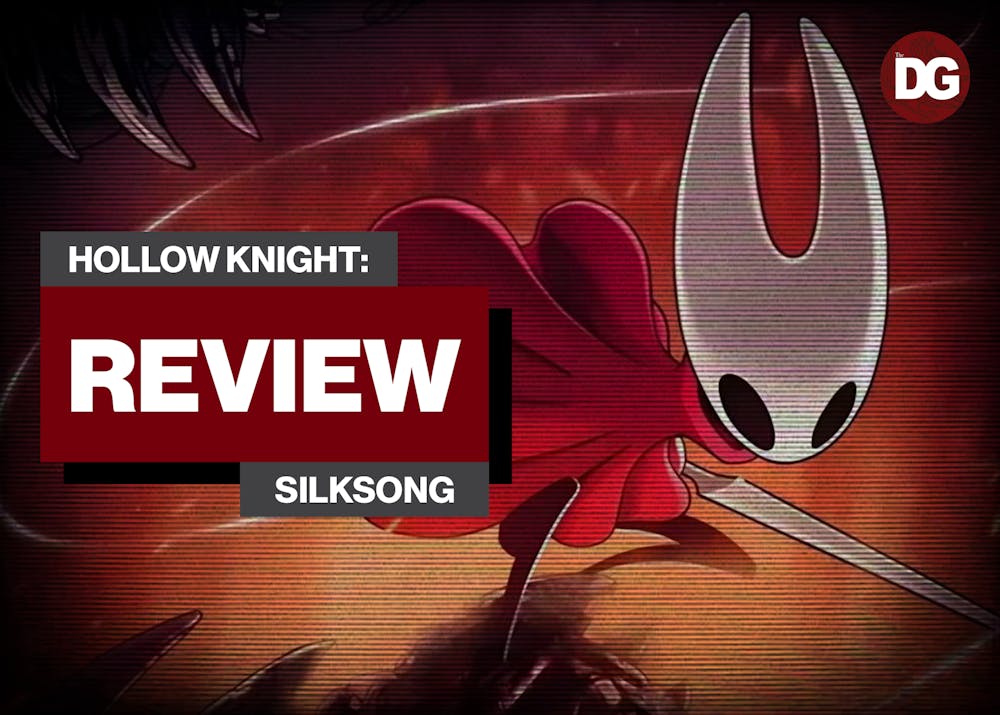
Over eight years since the release of "Hollow Knight" in 2017, Team Cherry has finally delivered on the long-promised sequel. For years, fans debated whether "Silksong" would ever see the light of day, with endless speculation caused by trailers, leaks and cryptic updates. The question now is whether it was worth the agony and despair of waiting so long. The answer is almost a resounding yes.
"Silksong" brings all the gravitas a sequel is expected to have: a bigger map, expanded enemy types, smooth acrobatic combat and a vibrant world tied together by a sprawling story. With that expansion comes a harsher reality, as this is a tougher but more rewarding challenge that may turn many casual gamers away. But for those willing to put in the hours and appreciate the artistry of Pharloom, the reward is immense.
Like its predecessor, "Silksong" is a challenging game that rewards mastery and punishes sloppy mistakes. Every boss, from the earliest encounters in the Moss Grotto to the towering terrors deeper in the world, is a relentless onslaught of choreographed agony. The ecstasy of finally overcoming a fight is indescribable, the sort of adrenaline rush that only comes after countless failed attempts. One early duel against a scaly bell bug perfectly sets the tone of fast, brutal and demanding precision. It’s a reminder that "Silksong" doesn’t just want you to win, it wants you to earn it.
The world of Pharloom itself stands in stark contrast to the world of Hallownest in "Hollow Knight". Where "Hollow Knight" landscapes leaned toward drab yet haunting beauty, "Silksong" explodes with life. The mossy greens of the Moss Grotto feel almost humid, buzzing with enemies that cling to walls and strike from the shadows. The Blasted Steps scorch the screen with golden sands and windswept cliffs, while Greymoor’s waters soak the player in dreary blues, masking lurking threats. Each biome feels handcrafted not only in its design but in its atmosphere, rewarding the player who stops to soak in the details as much as the one who charges forward to the next fight.
That expansiveness, however, can be a double-edged sword. The map’s sprawling design encourages exploration and rewards curiosity with secrets, hidden items and clever shortcuts. Yet the sheer size means backtracking becomes a frequent reality, especially for players chasing 100% completion. Certain boss runs require long treks that test not only skill but also patience. In that sense, Team Cherry has leaned even further into the Soulslike DNA that "Hollow Knight" flirted with.
The story adds more depth than some might expect from a game so focused on punishing combat. Hornet, unlike the silent Knight of the first game, has a clear voice both literally and narratively. Her interactions with NPCs reveal compassion and wit, setting her apart as a character trying to navigate an unfamiliar land with a mix of grace and guarded strength. The way she connects with Pharloom’s inhabitants, from downtrodden villagers to mysterious wanderers, fleshes out the kingdom as more than just a hostile playground.
Combat, however, remains the heart of "Silksong". Hornet’s acrobatic movements and smooth controls make battles feel like a deadly ballet. Where the Knight was weighty and deliberate, Hornet is light, agile and daring. She vaults off enemies, threads the battlefield with aerial spins and strings together combos that feel as graceful as they are lethal. Even regular encounters feel choreographed, more like a dance than a brawl. This heightened mobility makes combat fast, fluid and dynamic, often pushing players to think on their feet and rely on reflexes rather than pure memorization.
The skill set itself isn’t radically different from the abilities in "Hollow Knight", but Hornet’s natural flair makes even familiar mechanics feel fresh. Healing is quicker, but riskier movement tools encourage vertical exploration, and combat chains reward daring aggression. Mastering her kit feels like learning an instrument. You fumble at first, then gradually find yourself composing symphonies in motion.
If there is a flaw, it’s one of intensity. "Silksong" rarely lets up, piling challenge after challenge without always offering the moments of respite that gave "Hollow Knight" its haunting melancholy. For some, that’s the appeal. For others, it risks fatigue. But even in its most punishing stretches, Pharloom remains a world worth inhabiting, brimming with secrets and stories that linger long after you put the controller down.
In the end, "Silksong" is the game fans were promised so long ago — and perhaps more. It is vibrant, expansive and rich in story, character writing and art style. Its combat is tight and unforgiving, demanding discipline but rewarding mastery with unmatched satisfaction. Team Cherry has proven once again why its work stands as a shining reminder of the artistry games can achieve and the sadistic joy of developers unafraid to test the limits of their audience.

